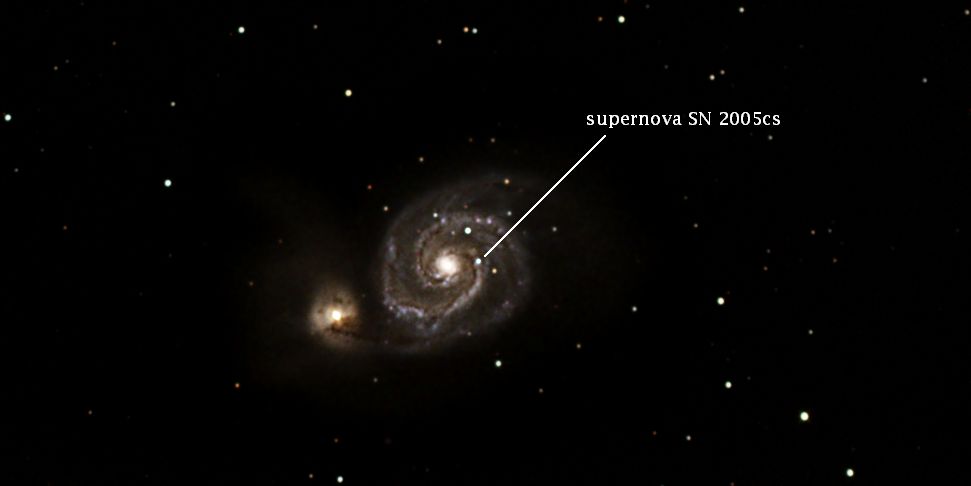
In July 2005, a supernova was discovered in M51, popularly known as the Whirlpool Galaxy. There are several types of supernova. The type most familiar to the public is the event caused by the collapse of a massive star that has burned its available nuclear fuel and no longer generates enough pressure in its core to offset the force of gravity. When this happens, the star dies and becomes either a neutron star or a black hole, depending on how much mass the star had when it went supernova. But such massive stars go out with a bang. For a brief time, a supernova can shine brighter than all of the other stars in a galaxy combined. In this case, the supernova is 35 million light-years away, and yet shines so brightly that it rivals stars in our own galaxy. In the above image, the stars superimposed on the image of M51 are foreground objects that are located in our own galaxy. However, supernova SN 2005cs is so bright that it looks like one of the foreground stars. This is the second supernova in M51 in 11 years, yet there has not been a supernova in our galaxy in over 350 years. Of course, this star actually exploded 35 million years ago, because it has taken 35 million years for its light to reach us.
This image was taken with a Takahashi Epsilon 250 telescope using an ST-8XE at f3.4. The image was taken from my backyard in Scottsdale, Arizona.
M51 (NGC 5194)
Constellation: Canes Venatici
RA:13h 30m 07s Dec:+47d 10' 16"
July 4, 2005
Image by Sid Leach
Scottsdale, Arizona
Recent Images.
Complete list of images.
Description of equipment used to acquire images.
Home
Feedback and comments should go to Sid